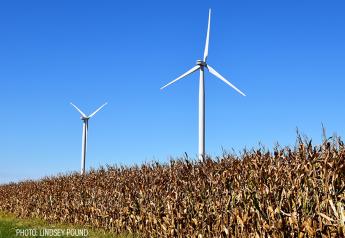Look for Rapid Growth Syndrome in Corn if you Have these Conditions

What Causes Rapid Growth Syndrome?
- Rapid growth syndrome occurs when corn leaves fail to unfurl properly and the whorl becomes tightly wrapped and twisted.
- It is generally associated with an abrupt transition from cool temperatures to warmer conditions, resulting in a sharp acceleration in plant growth rate.
- The rapidly growing new leaves are unable to emerge and will cause the whorl to bend and twist as they try to force their way out.
 |
Corn plants in rapid growth phase showing wrapping of leaves at the whorl. Affected plants typically recover and resume normal growth.
- Rapid growth syndrome most commonly occurs at the V5-V6 growth stage, but can be observed as late as V12.
- As with many weather-related stress effects, it is common for some hybrids to be more prone to rapid growth syndrome than others.
- Twisted whorls can also have other causes, most notably herbicide injury.
- Growth regulators and acetamides are the herbicides most commonly associated with twisted whorls or "buggy-whipping."
- Other herbicides may also interfere with leaf unfurling in rare cases.
 |
 |
Leaves that have been trapped in the whorl will often be bright yellow when
they emerge, making them very noticeable in the field.
What is the Long-Term Impact?
- Leaves of affected plants usually unfurl after a few days.
- Newly emerged leaves will often be yellow as a result of being twisted up inside the whorl, but will green up quickly once exposed to sunlight.
- Affected leaves may be wrinkled near the base and will remain that way throughout the growing season.
- Development of individual plants may be slightly delayed due to rapid growth syndrome; however, yield is unlikely to be reduced.







